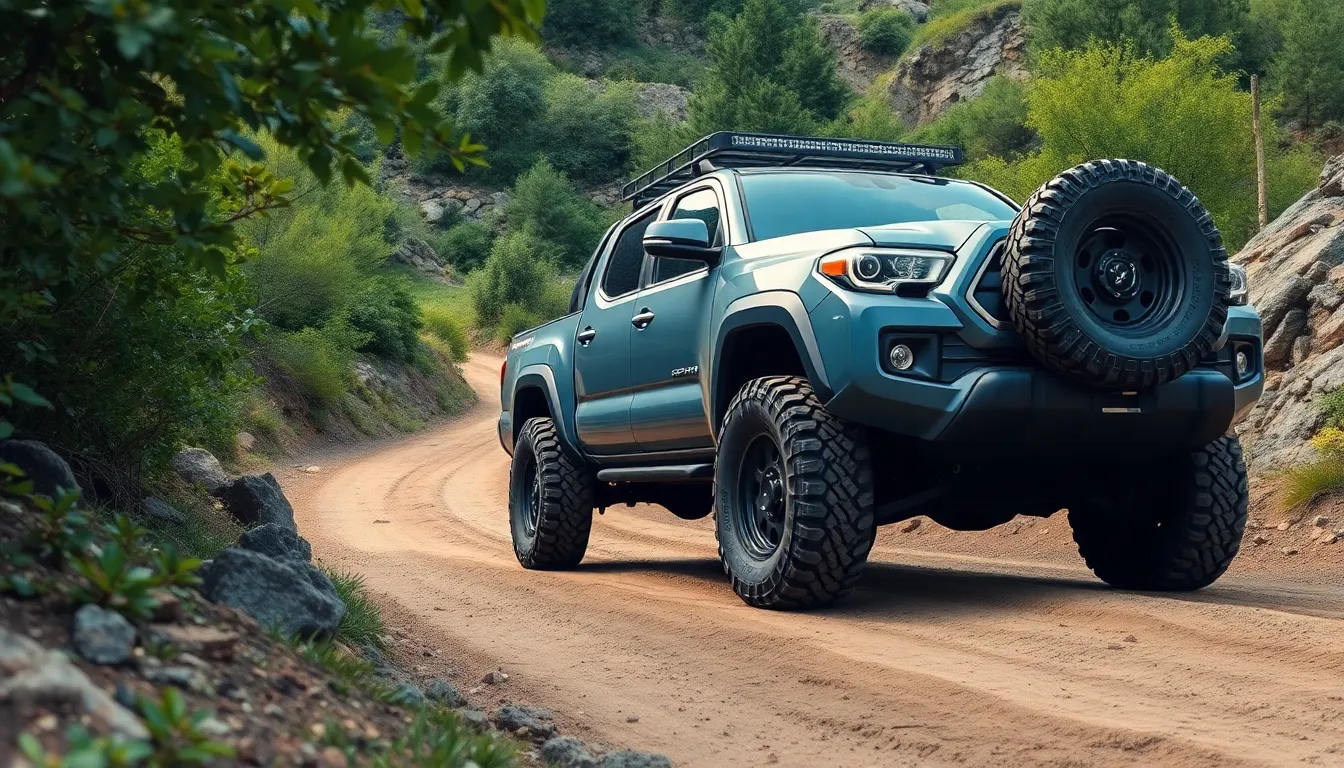Mud tires can transform your off-road adventures but they come with a hefty price tag that makes durability a top concern. We’ve all wondered whether these aggressive treads will survive countless trail runs or leave us shopping for replacements sooner than expected. The truth is mud tire lifespan varies dramatically based on factors most drivers never consider.
Understanding how long mud tires actually last isn’t just about getting your money’s worth – it’s about planning your adventures and budget effectively. We’ll break down the real-industry mileage you can expect from different tire brands and reveal the driving habits that either extend or destroy your investment.
Whether you’re a weekend warrior or serious off-road enthusiast the answers might surprise you. Let’s jump into what determines mud tire longevity and how you can maximize every mile from your next set.
What Are Mud Tires and How Do They Differ From Regular Tires
Mud tires feature specialized tread patterns designed specifically for traction in soft terrain conditions like mud, sand, and loose dirt. These tires incorporate deep, aggressive tread blocks with large voids between them that allow for self-cleaning as the tire rotates. Wide spacing between tread elements helps prevent mud and debris from packing into the tire grooves.
Regular tires prioritize on-road performance with tighter tread patterns optimized for pavement contact and fuel efficiency. Standard tire treads maintain smaller void ratios and shallower depths compared to mud tire designs. Highway tires typically feature continuous center ribs and circumferential grooves that enhance straight-line stability and water evacuation on paved surfaces.
Construction differences between mud tires and regular tires include reinforced sidewalls that resist punctures from rocks and branches during off-road use. Mud tires use thicker rubber compounds in both the tread area and sidewall construction. Ply ratings on mud tires often exceed those found on passenger vehicle tires to handle lower air pressures required for optimal traction in soft terrain.
Tread depth measurements reveal important variations between tire types:
| Tire Type | New Tread Depth | Tread Block Height | Void Ratio |
|---|---|---|---|
| Mud Tires | 18-23mm | 15-20mm | 40-60% |
| All-Terrain | 12-16mm | 8-12mm | 25-35% |
| Highway Tires | 8-11mm | 6-8mm | 15-25% |
Compound formulations in mud tires emphasize cut and chip resistance over rolling resistance characteristics found in street tires. Softer rubber compounds used in mud tire construction provide better conformability to irregular surfaces but increase wear rates on pavement. Heat dissipation properties differ significantly as mud tires generate more friction when driven on hard surfaces compared to their intended soft terrain applications.
Weight differences between mud tires and regular tires can range from 15 to 40 pounds per tire depending on size specifications. Increased weight affects vehicle dynamics including acceleration, braking distances, and fuel consumption when mud tires are used for daily driving applications.
Average Lifespan of Mud Tires
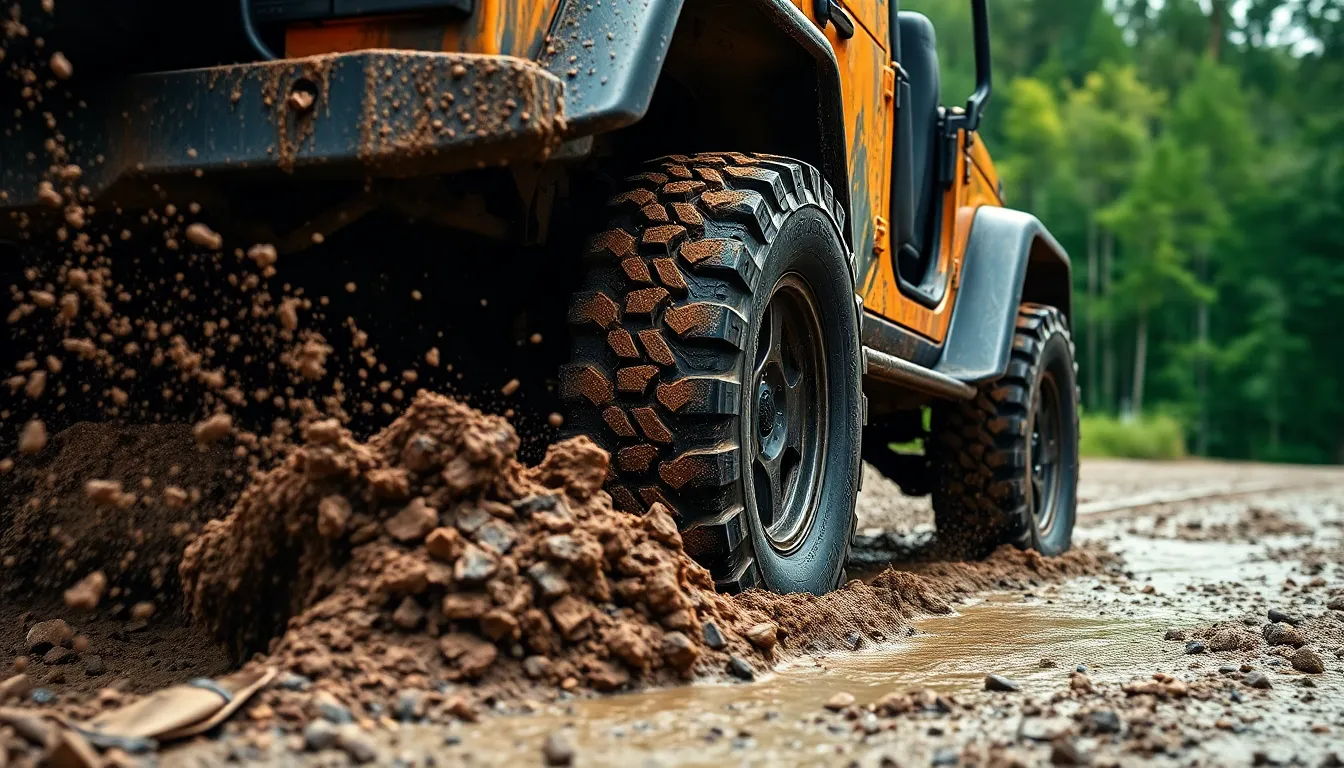
Mud tires deliver between 20,000 and 40,000 miles of service life under typical driving conditions. Premium mud tires can reach up to 60,000 miles when drivers maintain proper tire care practices.
Typical Mileage Range
Most mud tires reach their replacement point between 20,000 and 40,000 miles of use. Drivers who maintain consistent tire rotation schedules every 6,000 miles extend their mud tire lifespan significantly. Proper inflation levels and regular cleaning of mud debris help some tires achieve the upper range of 40,000 miles.
Premium mud tire brands offer enhanced durability that can stretch to 60,000 miles with diligent maintenance practices. Aggressive tread designs and softer rubber compounds create superior off-road traction but accelerate wear rates compared to standard tire types. Frequent pavement driving reduces mud tire longevity because their tread patterns optimize for off-road conditions rather than hard surface contact.
Comparison to All-Terrain and Highway Tires
| Tire Type | Typical Lifespan (Miles) | Key Characteristics |
|---|---|---|
| Mud-Terrain (MT) | 20,000 – 40,000 (up to 60,000 with care) | Very aggressive tread, superior off-road traction, softer compound, wears faster on pavement |
| All-Terrain (AT) | 30,000 – 50,000 (up to 65,000 on mostly road use) | Balanced tread design, firmer compound, quieter and more fuel-efficient than MT tires, longer wear life |
| Highway Tires | 50,000 – 70,000+ | Designed for smooth, quiet ride and long tread life on paved roads, not suitable for severe off-road use |
All-terrain tires outlast mud tires by 10,000 to 25,000 miles due to their firmer rubber compounds and balanced tread designs. Highway tires achieve the longest service life at 50,000 to 70,000+ miles because manufacturers optimize them for paved road durability and comfort. Mud tires sacrifice longevity for enhanced off-road capability, trading shorter tread life for superior mud clearing ability and traction in challenging terrain.
Key Factors That Affect Mud Tire Longevity
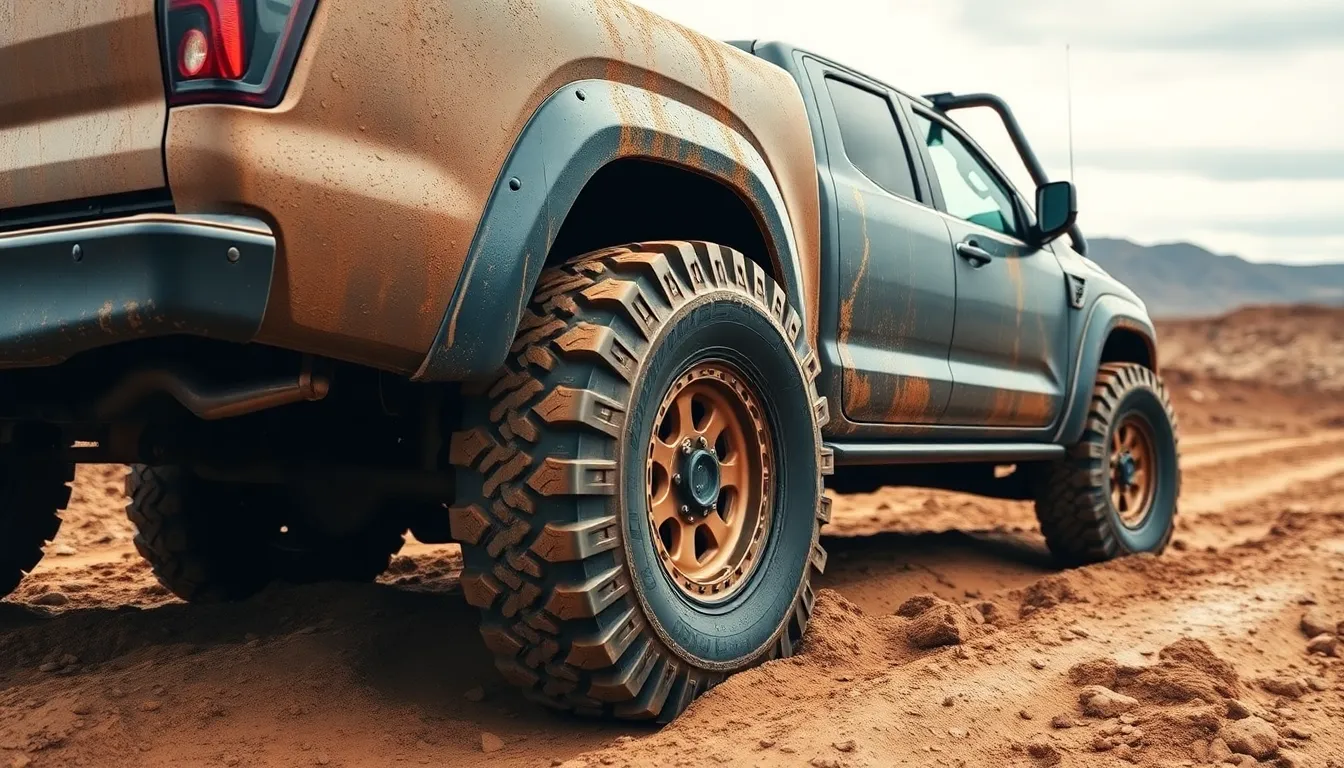
Several critical factors determine how long your mud tires last. Understanding these variables helps you maximize your investment and plan for replacements.
Driving Conditions and Terrain
Off-road driving creates the most important impact on mud tire lifespan through accelerated tread wear. Rocky terrain and rough surfaces cause aggressive wear patterns that can reduce tire life by 30-50% compared to mixed-use driving. Deep mud or loose soil creates particularly abrasive conditions where debris accumulation occurs, forcing the tire compound to work harder against foreign materials. Different terrain types produce varying wear rates, with sharp rocks being the most destructive to tire integrity. Muddy conditions also trap corrosive materials that continue wearing the tire even after driving stops.
Tire Quality and Construction
Higher-quality mud tires manufactured with durable compounds and reinforced construction consistently outlast budget alternatives. Premium brands incorporate advanced materials that resist punctures and maintain tread integrity under extreme conditions. Thicker sidewalls provide additional protection against cuts and impacts that commonly occur during off-road adventures. Advanced tread patterns engineered for exact terrain types can extend usable life by maintaining traction longer than generic designs. Construction features like steel belts and specialized rubber compounds directly correlate with the 50,000-60,000 mile lifespan achievable with top-tier brands.
Vehicle Weight and Usage Patterns
Heavier vehicles place additional strain on mud tires, reducing their expected lifespan significantly. Trucks used for towing or carrying heavy loads create extra stress that accelerates tread wear beyond normal parameters. Frequent highway use generates heat buildup that degrades tire compounds faster than intended off-road applications. Aggressive driving habits including rapid acceleration and hard braking contribute to premature wear regardless of terrain type. Load distribution across all four tires affects wear patterns, with improperly balanced vehicles showing uneven tread degradation that shortens overall tire life.
Signs Your Mud Tires Need Replacement
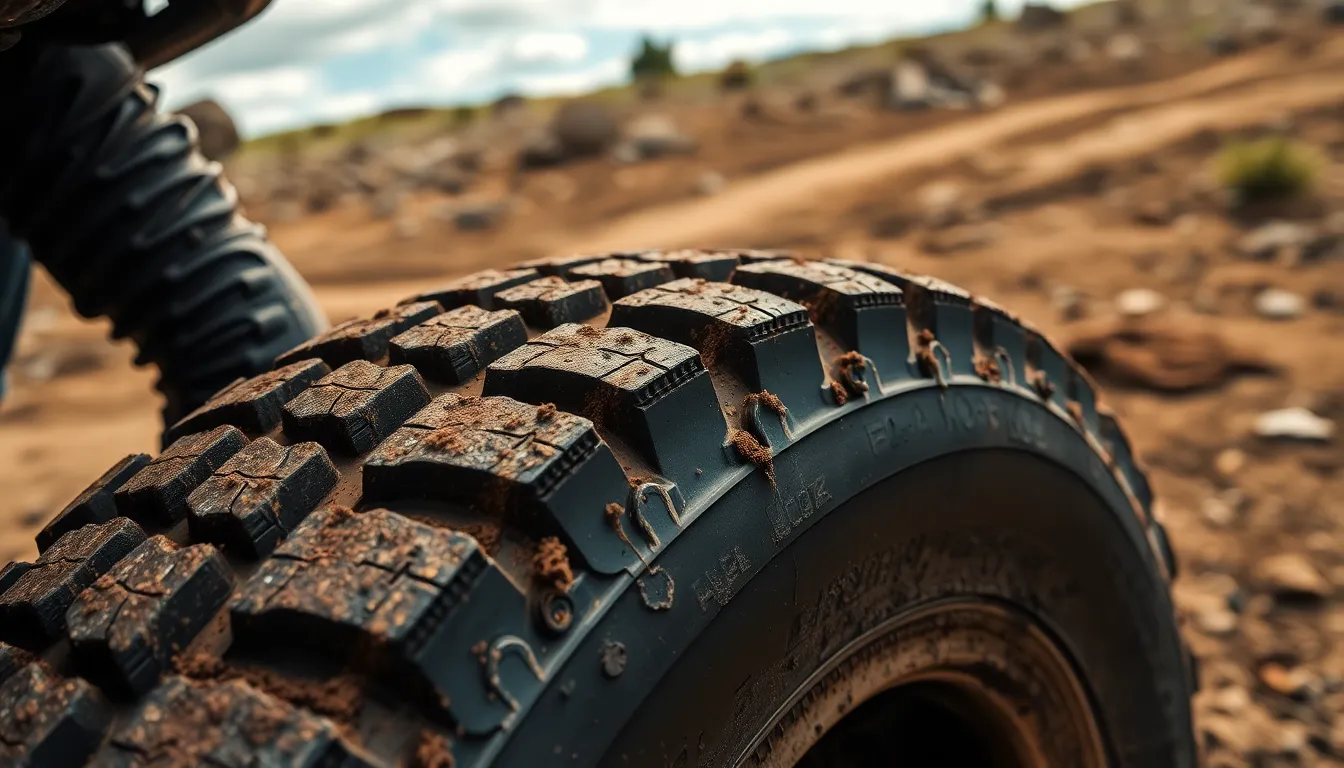
Recognizing when mud tires reach the end of their useful life prevents safety hazards and maintains optimal off-road performance. We can identify replacement needs through exact visual indicators that signal compromised tire integrity.
Tread Depth Indicators
Worn tread depth indicators serve as the primary signal for mud tire replacement timing. Mud tires feature built-in wear bars positioned at 2/32 inch tread depth that become visible when the tire reaches its legal replacement threshold. We recommend replacing mud tires before reaching this minimum depth since off-road traction deteriorates significantly at shallow tread levels.
Measuring tread depth with a penny gauge provides accurate replacement timing for mud tires. Lincoln’s head disappears completely when tread depth exceeds 2/32 inch, while Washington’s head on a quarter indicates approximately 4/32 inch depth. Mud tires perform optimally with tread depths above 6/32 inch for maximum off-road capability.
Different tread blocks wear at varying rates across the tire surface due to mud tire design characteristics. Outer blocks typically wear faster than center blocks during highway driving, while aggressive off-road use creates more uniform wear patterns. Checking multiple locations across each tire ensures accurate assessment of overall tread condition.
Sidewall Damage and Cracking
Visible sidewall cracks indicate structural deterioration that compromises tire safety and performance. These cracks develop from UV exposure, age-related rubber degradation, and stress from off-road impacts with rocks and debris. We observe that sidewall cracking accelerates after 5-6 years regardless of remaining tread depth.
Bulges and cuts in the sidewall create immediate replacement requirements for mud tires. Impact damage from sharp rocks or debris penetrates the reinforced sidewall construction, creating weak points that lead to catastrophic failure. Even minor cuts extending through the rubber surface warrant professional inspection and likely replacement.
Weathering patterns on sidewall surfaces reveal tire age and environmental exposure levels. Brown or gray discoloration combined with surface checking indicates advanced rubber deterioration that reduces tire flexibility and strength. Sidewall inspection becomes particularly important for mud tires stored outdoors or used infrequently, as these conditions accelerate aging processes.
How to Maximize Your Mud Tire Lifespan
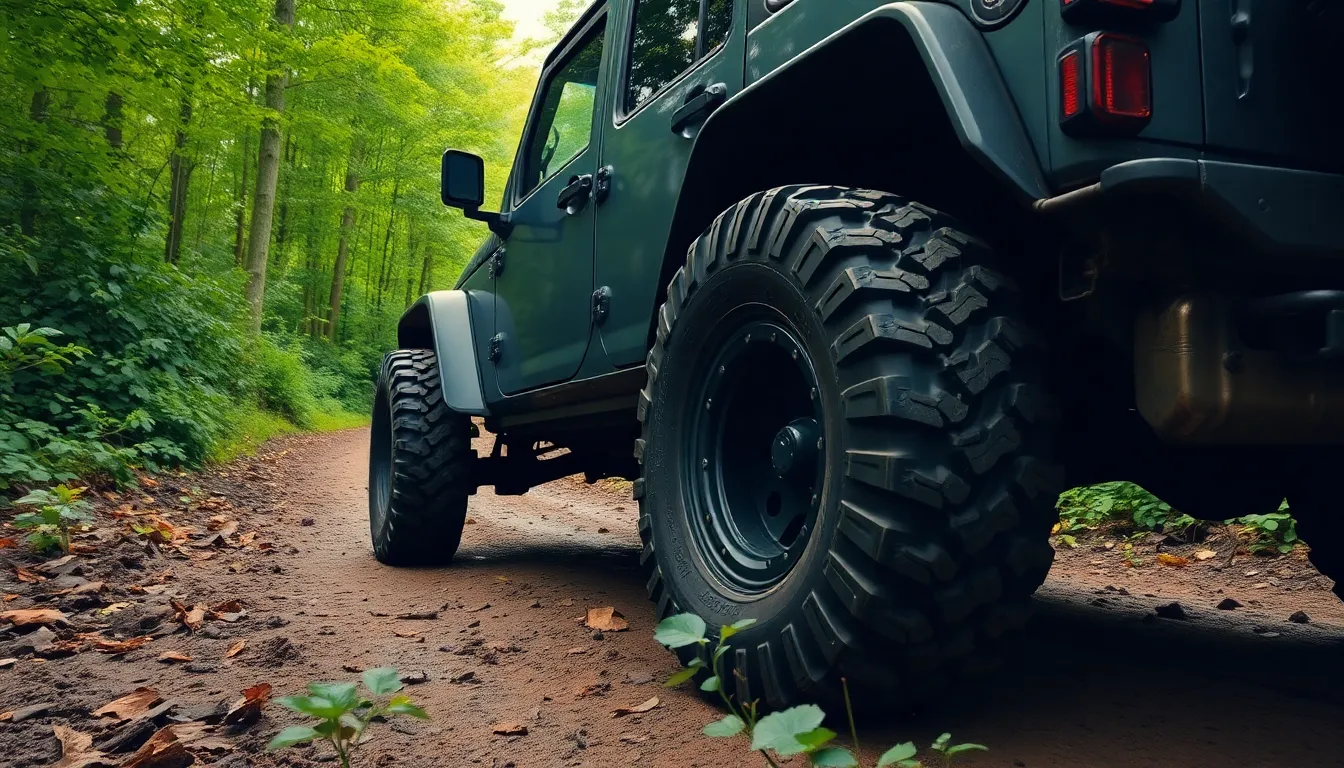
Extending mud tire life requires implementing exact maintenance practices and driving techniques that protect these specialized tires from premature wear. Strategic care can help achieve the upper range of the 20,000 to 40,000 mile lifespan typical for mud tires.
Proper Tire Rotation and Maintenance
Regular tire rotation ensures even tread wear across all four tires, significantly extending overall mud tire life. We recommend rotating mud tires every 5,000 to 7,500 miles to prevent uneven wear patterns that reduce performance and longevity.
Inspecting tread depth and sidewall condition during each rotation identifies potential issues before they become costly problems. Check for embedded rocks, nails, or debris that can cause slow leaks or sudden tire failure during off-road adventures.
Maintaining proper wheel alignment and balancing prevents irregular wear patterns that can reduce mud tire life by up to 25%. Misaligned wheels create excessive friction on exact tread areas, leading to premature replacement needs.
Correct Air Pressure Management
Maintaining manufacturer recommended air pressure maximizes mud tire lifespan and ensures optimal off-road performance. Under-inflated tires generate excessive heat and flex, causing accelerated sidewall deterioration and reduced tread life.
Checking tire pressure before each off-road trip prevents damage from incorrect inflation levels. Cold tire pressure measurements provide the most accurate readings since heat from driving increases internal pressure by 2-4 PSI.
Adjusting pressure based on terrain conditions protects mud tires from unnecessary stress and wear. Lower pressures for sand and soft terrain improve traction while reducing tire strain, but we must return to standard pressure for highway driving.
Smart Driving Habits
Minimizing highway driving extends mud tire life since aggressive tread patterns and softer rubber compounds wear faster on paved surfaces. Highway speeds generate excessive heat in mud tires, accelerating tread wear and reducing overall lifespan by up to 30%.
Adapting driving speed to terrain conditions reduces stress on mud tire construction and prevents premature failure. Moderate speeds on rocky terrain prevent cuts and punctures that compromise tire integrity and performance.
Avoiding harsh acceleration and braking preserves tread depth and maintains even wear patterns across the tire surface. Smooth driving techniques can extend mud tire life by 15-20% compared to aggressive driving styles that stress the tire structure.
Top Mud Tire Brands and Their Expected Durability
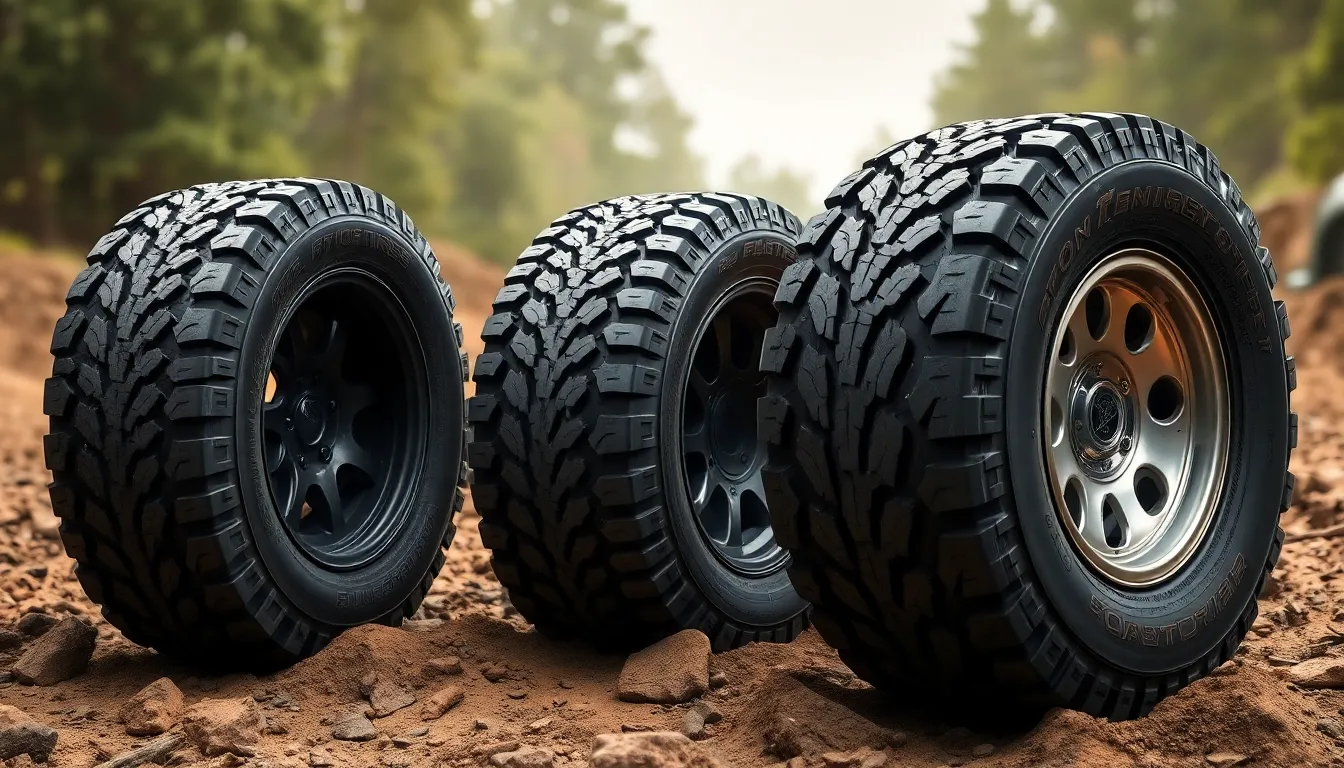
We’ve identified three leading manufacturers that consistently deliver superior mud tire performance and longevity. Each brand offers distinct advantages in terms of construction quality and expected mileage.
Toyo Tires stands out for their exceptional durability and performance in muddy conditions. Their mud tires feature reinforced sidewall construction and advanced rubber compounds that resist tearing and punctures. Models like the Toyo Open Country M/T typically achieve 35,000 to 45,000 miles under mixed driving conditions.
BFGoodrich offers high-quality tires with excellent traction and durability across their mud terrain lineup. The brand’s proprietary tread compounds and aggressive lug patterns provide superior grip while maintaining structural integrity. BFGoodrich mud tires commonly last between 25,000 and 40,000 miles depending on driving habits and terrain exposure.
Goodyear provides a comprehensive range of mud tires with varying durability levels based on exact model specifications. Their Wrangler MT/R series incorporates DuPont Kevlar reinforcement for enhanced puncture resistance. Goodyear mud tires deliver reliable performance across 20,000 to 35,000 miles of typical use.
| Brand | Expected Mileage Range | Key Features |
|---|---|---|
| Toyo Tires | 35,000 – 45,000 miles | Reinforced sidewalls, advanced compounds |
| BFGoodrich | 25,000 – 40,000 miles | Proprietary compounds, aggressive lugs |
| Goodyear | 20,000 – 35,000 miles | Kevlar reinforcement, varied model options |
Premium models from these manufacturers can extend beyond these ranges when combined with proper maintenance routines. Regular rotation schedules and appropriate pressure management significantly impact overall tire longevity across all three brands.
Cost vs. Longevity: Getting the Best Value
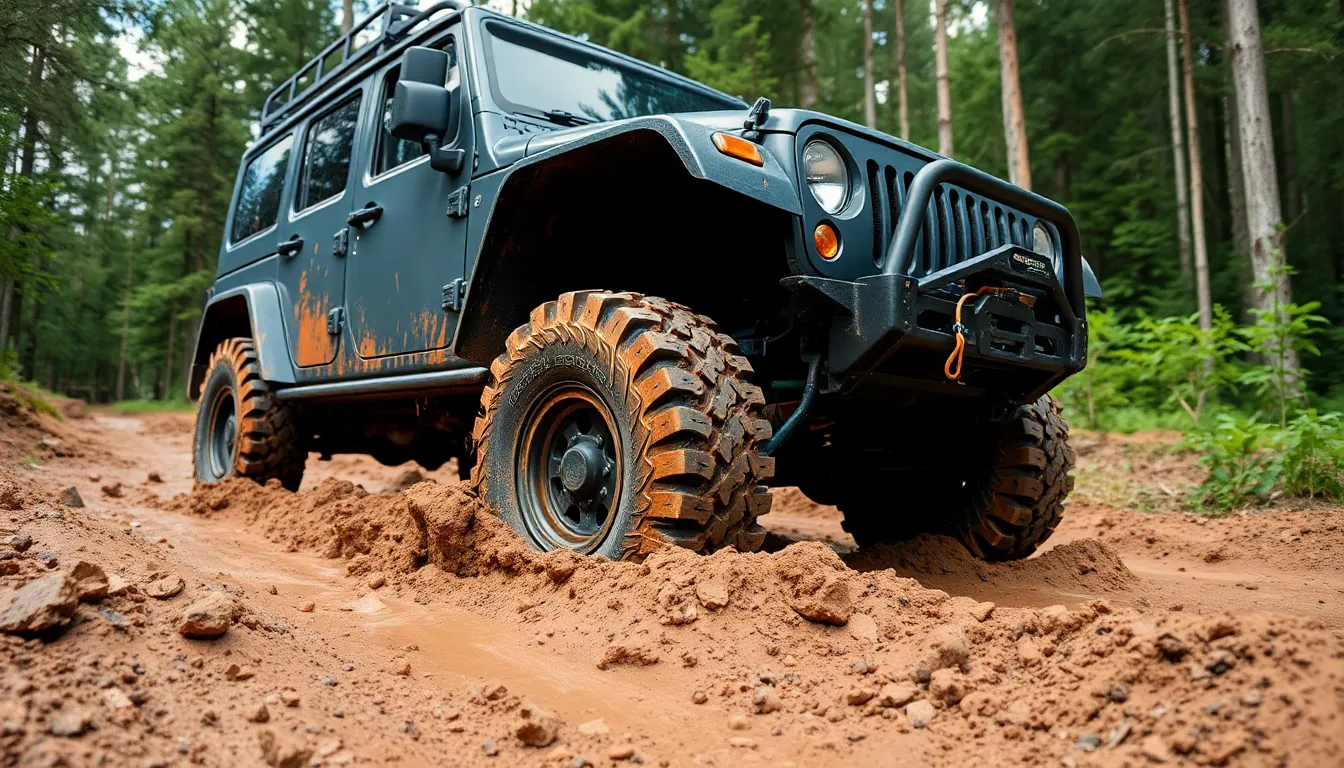
Mud tires cost significantly more than standard highway tires due to their specialized construction and materials. The initial investment ranges from $150 to $400 per tire for quality options, compared to $80 to $200 for regular tires.
Durability serves as the primary tradeoff when choosing mud tires. These specialized tires typically deliver 20,000 to 40,000 miles of service life, while all-terrain alternatives achieve 30,000 to 60,000 miles under similar conditions. Highway tires extend even further, reaching 50,000 to 70,000+ miles on paved surfaces.
Maximizing Value Through Strategic Usage
Optimize your tire usage by rotating between mud tires for off-road adventures and highway tires for daily commuting. This approach extends mud tire lifespan by reducing unnecessary wear on paved roads, where softer rubber compounds deteriorate faster.
Premium brands justify their higher upfront costs through enhanced durability and performance. Quality mud tires from established manufacturers can reach the upper end of the 20,000 to 40,000-mile range with proper maintenance, while budget options often fall short of expectations.
Maintenance Impact on Longevity
Regular tire inspections contribute directly to extended service life. Checking tread depth every 3,000 miles and maintaining proper air pressure prevents premature wear patterns that reduce overall mileage.
Proper rotation schedules every 5,000 to 7,500 miles distribute wear evenly across all four tires. This practice can increase total lifespan by 15-20% compared to tires that remain in fixed positions.
Cleaning mud debris after each off-road excursion prevents corrosive buildup that weakens rubber compounds. Simple maintenance steps like these help mud tires reach their maximum potential lifespan of 40,000 miles under optimal conditions.
Conclusion
We’ve explored the essential factors that determine mud tire longevity and discovered that with proper care these specialized tires can serve us well for 20,000 to 60,000 miles depending on brand quality and maintenance practices.
The key to maximizing our investment lies in understanding that mud tires require more attention than regular tires. Regular rotation proper inflation and smart driving habits can significantly extend their lifespan while helping us get the most value from our purchase.
Remember that while mud tires cost more upfront their superior off-road performance justifies the investment for serious adventurers. By following the maintenance strategies we’ve outlined and recognizing replacement signs early we can ensure our mud tires deliver reliable performance throughout their service life.
Frequently Asked Questions
How long do mud tires typically last?
Mud tires generally last between 20,000 to 40,000 miles under normal driving conditions. Premium brands with proper maintenance can potentially reach up to 60,000 miles. However, their lifespan is typically shorter than regular highway tires due to their specialized design for off-road traction rather than longevity.
What factors affect mud tire longevity?
The main factors include driving conditions and terrain, tire quality and construction, and vehicle weight and usage patterns. Off-road driving on rocky or abrasive surfaces can reduce tire life by 30-50%. Premium brands with reinforced construction last longer than budget options, while heavier vehicles and aggressive driving habits accelerate wear.
How do mud tires differ from regular tires?
Mud tires feature deep, aggressive tread patterns with wide spacing to prevent mud buildup and provide traction in soft terrain. They have reinforced sidewalls and thicker rubber compounds for puncture resistance. Regular tires prioritize on-road performance with tighter tread patterns optimized for fuel efficiency and smoother highway driving.
When should I replace my mud tires?
Replace mud tires when tread depth reaches the wear bars or approaches 2/32 inch minimum. For optimal performance, consider replacement when tread depth falls below 6/32 inch. Also check for sidewall damage like cracks or bulges, and signs of aging such as discoloration or surface checking.
How can I maximize my mud tire lifespan?
Regular tire rotation every 5,000-7,500 miles ensures even wear. Maintain proper air pressure and check it before off-road trips. Clean mud debris after adventures, minimize highway driving when possible, and adapt your driving speed to terrain conditions. These practices can significantly extend tire life.
Which mud tire brands last the longest?
Top-performing brands include Toyo Tires (35,000-45,000 miles), BFGoodrich (25,000-40,000 miles), and Goodyear (20,000-35,000 miles). Premium models from these manufacturers can exceed these ranges with proper maintenance. These brands use advanced rubber compounds and reinforced construction for enhanced durability.
Are mud tires more expensive than regular tires?
Yes, mud tires cost significantly more than highway tires, ranging from $150-$400 per tire compared to $80-$200 for regular tires. To optimize costs, consider alternating between mud tires for off-road adventures and highway tires for daily commuting to extend the specialized tires’ lifespan.

